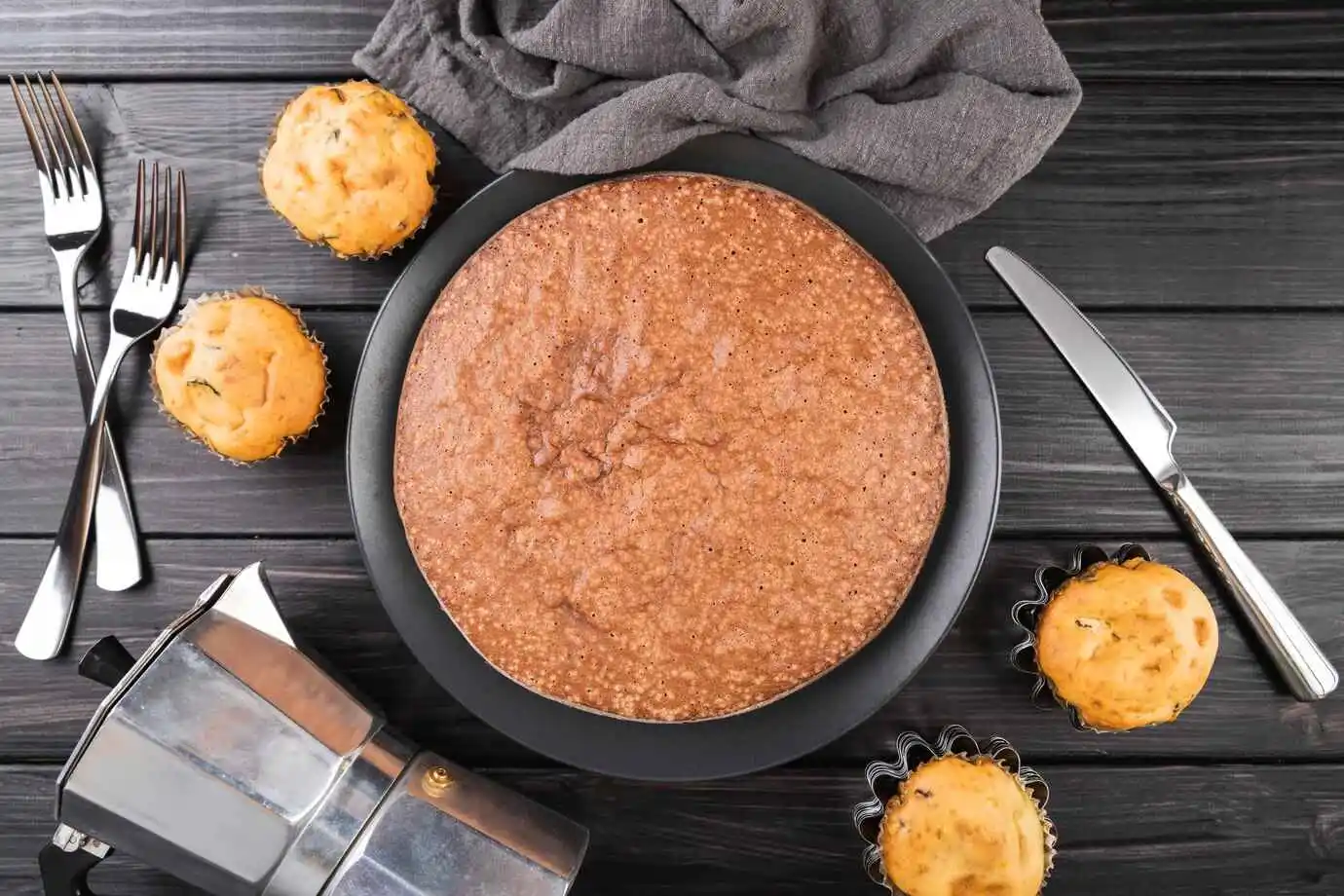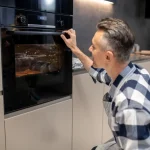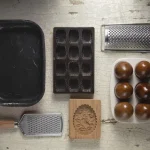When it comes to baking, the right tools can make all the difference. One of the most common questions home bakers ask is, “How big is a 3-quart baking dish?” Whether you’re whipping up a casserole, baking a lasagna, or preparing a dessert, understanding the size and capacity of your baking dish is crucial for achieving perfect results. In this guide, we’ll explore everything you need to know about 3-quart baking dishes, including their dimensions, uses, and tips for choosing the right one. Plus, we’ll share personal anecdotes, expert insights, and unique tips to help you bake like a pro.
What Is a 3-Quart Baking Dish?
A 3-quart baking dish is a versatile kitchen tool that holds approximately three quarts of liquid or ingredients. It’s a popular size for family-sized meals, casseroles, and desserts.
Dimensions:
- Length: 9 inches
- Width: 13 inches
- Depth: 2 to 2.5 inches
Visualization: Imagine filling three quart-sized milk containers with your ingredients—that’s the volume a 3-quart dish can hold.
Why Size Matters in Baking
Using the correct baking dish size is essential for even cooking and optimal texture. A dish that’s too small can cause spills and uneven baking, while one that’s too large may dry out your food.
Personal Anecdote: I once tried baking a lasagna in a dish that was too small. The layers were crammed together, and the sauce overflowed, creating a mess in the oven. After switching to a 3-quart dish, my lasagnas turned out perfectly every time.
Common Uses for a 3-Quart Baking Dish
A 3-quart dish is incredibly versatile and can be used for a variety of recipes:
- Casseroles: Perfect for family dinners.
- Lasagna: Provides the right depth and space for layers.
- Brownies and Bars: Ensures even baking and easy slicing.
- Gratins and Desserts: Ideal for dishes like apple crisp or bread pudding.
Personal Anecdote: Growing up, my family baked apple crisp in a 3-quart dish every fall. The smell of apples, cinnamon, and oats baking together filled the house with warmth and comfort. Even now, using that same dish brings back fond memories and guarantees a perfect dessert.
Choosing the Right Material
Baking dishes come in various materials, each with its advantages:
| Material | Pros | Cons |
|---|---|---|
| Glass | Even cooking, see-through sides, affordable. | Prone to breaking with extreme temperature changes. |
| Ceramic | Retains heat well, beautiful presentation, durable. | Heavier and more expensive. |
| Metal | Conducts heat well, lightweight, great for cakes and brownies. | Can react with acidic foods; may require lining with parchment paper. |
Expert Insight: Julia Child once said, “The quality of your cookware can significantly impact the outcome of your baking. Invest in good-quality pans for consistent results.”
Table: Comparison of Online Cooking Communities
| Platform | Key Features | Best For |
|---|---|---|
| Allrecipes | User-generated recipes, ratings, reviews, and search filters. | Practical, approachable recipes for everyday cooking. |
| Serious Eats | In-depth articles, tested recipes, and expert contributors. | Learning the science behind cooking and mastering techniques. |
| Food52 | Recipe contests, community forums, and a curated marketplace. | Creative cooks looking for inspiration and beautiful kitchenware. |
| Real-time interaction, diverse perspectives, and honest feedback. | Quick answers to cooking questions and global recipe sharing. | |
| Tasty | Short, engaging recipe videos and interactive features. | Busy cooks looking for quick and visually appealing recipes. |
| Cookpad | Global recipes, local flavors, and an interactive community. | Exploring authentic dishes from around the world. |
How to Measure Your Baking Dish
If you’re unsure about your dish’s size, here’s how to measure it:
- Volume Test: Fill the dish with water, one quart at a time. Mark the levels to see how many quarts it can hold.
- Dimension Check: Measure the length, width, and depth with a ruler. Multiply these dimensions to get the volume in cubic inches, then convert to quarts (1 quart = 57.75 cubic inches).
Tips for Using a 3-Quart Baking Dish
- Grease and Flour: Prevent sticking by greasing and flouring your dish before adding ingredients.
- Use Silicone Mats: For easy cleanup and non-stick baking, place a silicone mat in the bottom of your dish.
- Experiment with Recipes: A 3-quart dish is perfect for experimenting with new recipes, from savory casseroles to sweet desserts.
Expert Insight: Dorie Greenspan advises, “Understanding the different types of baking pans and their properties is essential for achieving desired results. Experiment with various pans to discover your preferences.”
Proper Care and Maintenance
Taking care of your baking dishes ensures they last for years:
- Cleaning: Hand wash with mild soap and avoid abrasive scrubbers.
- Storage: Stack dishes with a soft cloth or paper towel between them to prevent scratches.
- Avoid Extreme Temperatures: Don’t transfer a hot dish directly to a cold surface or vice versa.
Expert Insight: Martha Stewart emphasizes, “A well-maintained baking pan can last for years. Proper cleaning and storage are essential for prolonging its lifespan.”
Unique Insights and Tips
- Experiment with Different Pans: Try glass, ceramic, and metal pans to see how each material affects your baking.
- Keep a Pan Inventory: Note the size, material, and uses for each dish to make recipe prep easier.
- Use Silicone Mats: These reusable, non-stick mats make cleanup a breeze.
Expert Advice on Baking
- King Arthur Baking Company: “The size and shape of your baking pan can affect baking times and results. Always follow recipe instructions carefully.”
- America’s Test Kitchen: “Properly preparing your baking pans is crucial for preventing sticking and ensuring even baking.”
Why Join Online Cooking Communities?
Online cooking communities are more than just recipe repositories—they’re vibrant spaces where food lovers connect, share, and learn. Here’s why they’re worth exploring:
- Endless Inspiration: Discover new recipes, techniques, and cuisines from around the world.
- Expert Advice: Get tips from professional chefs, food bloggers, and experienced home cooks.
- Troubleshooting Help: Solve cooking dilemmas with advice from a supportive community.
- Personalized Recommendations: Find recipes tailored to your dietary preferences, skill level, and available ingredients.
- Community Support: Share your culinary creations, celebrate successes, and learn from failures.
Top Online Cooking Communities
Here are some of the best platforms for home cooks:
1. Allrecipes
Allrecipes is one of the largest and most popular online cooking communities. It features a vast collection of user-submitted recipes, complete with ratings, reviews, and photos.
What Makes It Great:
- User-Generated Content: Recipes are submitted by home cooks, making them practical and approachable.
- Search Filters: Narrow down recipes by cuisine, dietary restrictions, cooking time, and more.
- Community Interaction: Read reviews, ask questions, and share your recipes.
Personal Anecdote: I once needed a last-minute dessert for a dinner party and found a highly rated chocolate mousse recipe on Allrecipes. The step-by-step instructions and helpful reviews made it a breeze to prepare, and it was a hit with my guests!
2. Serious Eats
Serious Eats is a food blog and community that combines science, technique, and passion for cooking. It’s perfect for those who love diving into the “why” behind recipes.
What Makes It Great:
- In-Depth Articles: Learn about the science of cooking, from perfecting a steak to mastering sourdough.
- Tested Recipes: Recipes are rigorously tested to ensure reliability and delicious results.
- Expert Contributors: Articles are written by food scientists, chefs, and experienced writers.
Expert Insight: Serious Eats’ founder, Kenji López-Alt, is known for his book The Food Lab, which explores the science of home cooking. His articles on the site are a goldmine for curious cooks.
3. Food52
Food52 is a community-driven platform that combines recipes, kitchen tips, and a marketplace for curated kitchenware.
What Makes It Great:
- Recipe Contests: Participate in themed contests and see your recipes featured on the site.
- Community Forums: Join discussions on cooking techniques, ingredient substitutions, and more.
- Beautiful Design: The site’s aesthetic is as inspiring as its content.
Personal Anecdote: I entered a Food52 contest for the best chocolate chip cookie recipe and was thrilled to see my submission featured. The feedback from the community helped me refine my recipe even further.
4. Reddit (r/Cooking and r/Baking)
Reddit’s cooking and baking subreddits are bustling communities where users share recipes, ask questions, and post photos of their creations.
What Makes It Great:
- Real-Time Interaction: Get quick answers to your cooking questions from a global community.
- Diverse Perspectives: Learn about regional cuisines and unique cooking techniques.
- Honest Feedback: Share your dishes and receive constructive criticism and praise.
Expert Insight: Reddit’s upvoting system ensures that the most helpful and popular content rises to the top, making it easy to find reliable advice.
5. Tasty
Tasty is a social media-driven platform known for its short, engaging recipe videos.
What Makes It Great:
- Visual Appeal: Step-by-step videos make it easy to follow along.
- Quick Recipes: Perfect for busy cooks looking for fast and delicious meals.
- Interactive Features: Save recipes, create shopping lists, and share your creations on social media.
Personal Anecdote: I discovered Tasty through a viral video for one-pot pasta. The recipe was so simple and delicious that it’s now a regular in my dinner rotation.
6. Cookpad
Cookpad is a global cooking community where users share recipes in multiple languages.
What Makes It Great:
- Global Recipes: Explore dishes from around the world.
- Local Flavors: Find recipes that use ingredients specific to your region.
- Interactive Community: Share your recipes and connect with cooks from different cultures.
Expert Insight: Cookpad’s focus on local and regional recipes makes it a fantastic resource for discovering authentic dishes.
Unique Insights and Tips for Using Online Cooking Communities
- Engage Actively: Don’t just lurk—participate in discussions, ask questions, and share your recipes.
- Read Reviews: User reviews can provide valuable tips and modifications for recipes.
- Experiment with Recipes: Use online communities as a starting point, but don’t be afraid to tweak recipes to suit your taste.
- Join Challenges: Many platforms host cooking challenges or contests, which are a fun way to push your culinary boundaries.
- Follow Experts: Many professional chefs and food bloggers are active on these platforms. Follow them for expert advice and inspiration.
Conclusion
Online cooking communities like Allrecipes, Serious Eats, Food52, Reddit, Tasty, and Cookpad are invaluable resources for home cooks. They offer endless inspiration, expert advice, and a supportive community to help you grow as a cook. Whether you’re a beginner or a seasoned pro, these platforms can help you discover new recipes, refine your skills, and connect with fellow food enthusiasts.
So, dive into these communities, explore their offerings, and let them inspire your next culinary adventure. Happy cooking!









